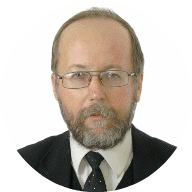The research is supported by a grant of the Russian Science Foundation, project No 14-18-00308
The fact that elder people are more religious than younger ones was noticed long ago. However, what are the causes of this phenomenon? Is it the fact that people really become more religious with aging (i.e. age effect)? Or the fact that under the influence of social macro trends more religious generations are replaced with less and less religious ones (i.e. the so-called “cohort effect”)? This question is not resolved so far. We have attempted to assess the relative contribution of cohort and age effect in the higher religiosity of the elderly through a multi-factor model in which variables describing religious values depend on those of age and cohort and are controlled for respondents’ gender, level of education, marital status, position in the labor market/employment and income, according to the data of global sociological project World Values Survey for high income OECD countries in 1981–2014. The results of our analysis suggest that in these countries in the recent decades the higher religiosity of the elderly is accounted for by the age factor to a substantially greater extent than by the cohort effect – cohort effect plays a statistically significant role, but the age effect is much stronger (that is, people in these countries really become more religious with aging, and one in no way can explain the greater religiosity of the elderly by the cohort effect only). This implies an important conclusion: the population ageing in the high income OECD countries may slow down there the transition from religious to secular values and even lead to some increase in the general level of religiosity; and we seem to already see some symptoms of this in some countries that have advanced in the population ageing process (particularly, in Japan).
Keywords: religiosity, ageing, secularization, cohort effect, age effect, global ageing, high income OECD countries
DOI: 10.22250/2072-8662.2017.3.134-144
About the author
 |
Andrey V. Korotayev – DSc (History), Head of the Laboratory for Monitoring of Sociopolitical Destabilization Risks and Senior Research Scientist at International Research Laboratory for Demography and Human Capital; National Research University Higher School of Economics, The Russian Presidential Academy of National Economy and Public Administration; 82/5, Prospect Vernadskogo, Moscow, Russian Federation 119571; This email address is being protected from spambots. You need JavaScript enabled to view it. |
 |
Sergey G. Shulgin – PhD (Economics), Deputy Director at International Research Laboratory for Demography and Human Capital at The Russian Presidential Academy of National Economy and Public Administration; 82/5, Prospect Vernadskogo, Moscow, Russian Federation 119571; This email address is being protected from spambots. You need JavaScript enabled to view it. |
 |
Julia V. Zinkina – PhD (World History), Senior researcher at the International Research Laboratory for Demography and Human Capital, The Russian Presidential Academy of National Economy and Public Administration; 82/5, Prospect Vernadskogo, Moscow, Russian Federation 119571; This email address is being protected from spambots. You need JavaScript enabled to view it. |
 |
Daria A. Bykanova – Junior researcher at International Research Laboratory for Demography and Human Capital, The Russian Presidential Academy of National Economy and Public Administration; 82/5, Prospect Vernadskogo, Moscow, Russian Federation, 119571; This email address is being protected from spambots. You need JavaScript enabled to view it.
|






